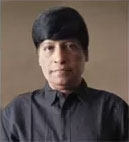
As Maharashtra gears up for elections, political parties are turning to young candidates to connect with the state’s burgeoning youth population. With employment, education, and urban development at the forefront, parties like Shiv Sena, BJP, NCP, and Congress are focusing on fresh faces to energize their campaigns and win over the next generation of voters.
As Maharashtra gears up for the upcoming elections, the likelihood of political parties fielding young candidates is high, driven by several key factors: Maharashtra, like much of India, has a young electorate. About 50% of the state’s population is under the age of 30. To engage this significant voter base, parties often field younger candidates who can better connect with the aspirations and concerns of young voters.
Employment, education, technology, and entrepreneurship are crucial issues for younger voters. Young candidates, especially those active on social media and aware of modern challenges, are seen as more relatable and better positioned to address these topics.
Established parties like the Shiv Sena (Shinde faction and Uddhav Thackeray faction), BJP, Congress, and NCP have been increasingly experimenting with new leadership. Leaders like Aaditya Thackeray have shown that young faces can hold significant influence, setting a precedent for other parties to follow.
Voters often feel disillusioned by seasoned politicians and demand fresh faces who can bring new energy and ideas. Parties might leverage this sentiment by fielding younger candidates to combat anti-incumbency feelings and appeal to those looking for change.
Many political families in Maharashtra often push younger members into the electoral arena. While this might be seen as a continuation of dynastic politics, these young candidates often bring a fresh perspective and are groomed to appeal to both rural and urban voters.
Newer political outfits and regional movements are also gaining ground, and many of these parties, such as the Maharashtra Navnirman Sena (MNS) or newer farmer-led coalitions, may rely on young candidates who represent a break from traditional politics.
Given these trends, it’s likely that most major parties will field a mix of experienced leaders and young candidates. The balance they strike between the two may significantly shape the election’s outcomes.
Several political parties are likely to focus on youth-centric strategies during the upcoming elections. Here’s a look at how different parties might appeal to younger voters and field young candidates:
Shiv Sena (Uddhav Thackeray faction): Aaditya Thackeray’s influence: Aaditya Thackeray has emerged as one of the leading young faces in Maharashtra politics. His youth-centric initiatives, like the promotion of environmental sustainability and urban development in Mumbai, make this faction of Shiv Sena more appealing to younger, urban voters.
Engagement with urban issues: The party may focus on youth issues related to employment, housing, and urban infrastructure, particularly in cities like Mumbai and Pune, where younger voters are key.
BJP (Bharatiya Janata Party): Youth outreach through tech: The BJP has long invested in its social media and digital outreach, often tapping into youth concerns with policies on education, entrepreneurship (like “Start-Up India”), and technology. The BJP is likely to promote its younger leaders and candidates who can drive a tech-savvy and modern image.
Youth in leadership positions: Leaders like Devendra Fadnavis, who still appeal to the youth, will play a crucial role. The party might also field new candidates with strong social media presence and youth appeal.
Nationalist Congress Party (NCP): Suhas Deshmukh and Rohit Pawar’s rise: With the party leader Sharad Pawar aging, younger leaders like Rohit Pawar have gained prominence. Rohit, with his work in agriculture and youth-centric causes, is expected to play a significant role in rallying the younger electorate.
Focus on agriculture and rural youth: Given NCP’s stronghold in rural Maharashtra, they will likely focus on the agrarian crisis, rural employment, and skill development for young people, particularly in farming communities.
Congress (INC): Maharashtra Congress, though traditionally dominated by senior leaders, has been working to field younger candidates to revive its appeal, particularly with urban youth. Youth wings and student organizations: The Congress has an active youth wing (NSUI) and will rely on its younger base to campaign on issues like education reform, job creation, and social justice.
Maharashtra Navnirman Sena (MNS): Appeal to the working-class youth: MNS, under Raj Thackeray, has often positioned itself as the voice of “Marathi Manoos” and the working-class youth. In recent years, the party has made attempts to modernize its image by focusing on urban development, employment, and the betterment of infrastructure.
Focusing on job creation: MNS could position itself as a pro-youth party by pushing for jobs for local youth, with a rhetoric focused on the employment challenges faced by young Maharashtrians.
Aam Aadmi Party (AAP): Emerging appeal among youth: While not a major player in Maharashtra yet, AAP has been building its presence, particularly in urban areas. AAP’s clean governance narrative, focus on education, health, and anti-corruption has resonated well with younger, educated voters in other states, and they may try to replicate this in Maharashtra.
Fielding young candidates: AAP tends to field young, educated, and grassroots-connected candidates, a model it could apply in the upcoming state elections.
Farmer-led movements: Regional farmer coalitions, such as the Swabhimani Paksha, which appeals to younger farmers, could gain traction. These movements are tapping into the agrarian distress felt by young rural voters, who are increasingly demanding better policies for rural development, land rights, and employment.
Local youth movements: Parties or movements that appeal to local issues, like Maratha or Dalit youth organizations, might field candidates who focus on identity politics and social justice, capitalizing on regional and caste-based youth mobilization.
With social media being a critical platform for youth engagement, parties that effectively use digital campaigns to address education, unemployment, and tech entrepreneurship are likely to resonate with young voters.
Every party, especially those looking to tap into the youth vote, will focus heavily on creating jobs and skill development programs as unemployment remains a key issue.
Environmental issues like climate change, waste management, and sustainability are gaining importance, especially among younger, educated urban voters. Parties that integrate green policies and sustainability projects could attract this demographic.
In conclusion, while every major party will attempt to attract young voters, parties like Shiv Sena (Uddhav Thackeray faction), NCP, MNS, and emerging forces like AAP may be more aggressive in fielding young candidates and adopting youth-centric platforms in Maharashtra’s upcoming elections.

A Column By
Raju Korti – Editor
The Resource 24X7
A Journalist With 4 Decades of Experience With Leading Media Houses.
